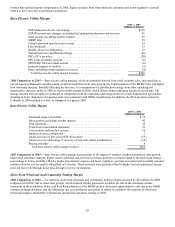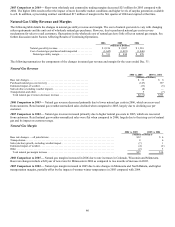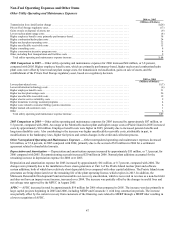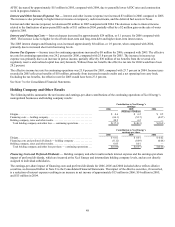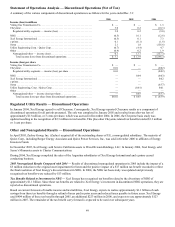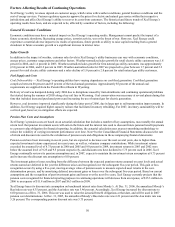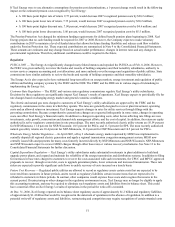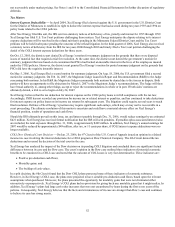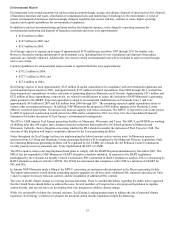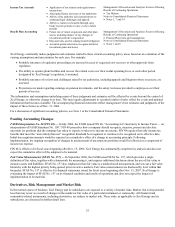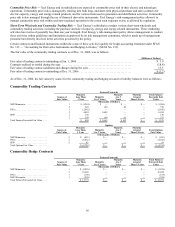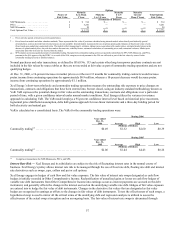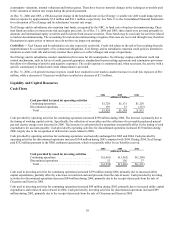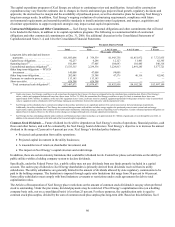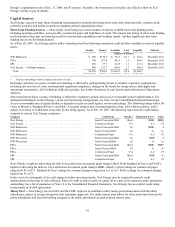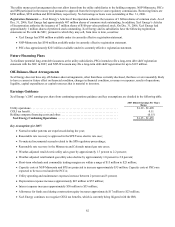Xcel Energy 2006 Annual Report Download - page 65
Download and view the complete annual report
Please find page 65 of the 2006 Xcel Energy annual report below. You can navigate through the pages in the report by either clicking on the pages listed below, or by using the keyword search tool below to find specific information within the annual report.55
Income Tax Accruals • Application of tax statutes and regulations to
transactions
• Anticipated future decisions of tax authorities
• Ability of tax authority decisions/positions to
withstand legal challenges and appeals
• Ability to realize tax benefits through carry
backs to prior periods or carry overs to future
periods
Management’s Discussion and Analysis: Factors Affecting
Results of Continuing Operations
• Tax Matters
Notes to Consolidated Financial Statements
• Notes 1, 7 and 14
Benefit Plan Accounting • Future rate of return on pension and other plan
assets, including impact of any changes to
investment portfolio composition
• Discount rates used in valuing benefit obligation
• Actuarial period selected to recognize deferred
investment gains and losses
Management’s Discussion and Analysis: Factors Affecting
Results of Continuing Operations
• Pension Plan Costs and Assumptions
Notes to Consolidated Financial Statements
• Notes 1 and 9
Xcel Energy continually makes judgments and estimates related to these critical accounting policy areas, based on an evaluation of the
varying assumptions and uncertainties for each area. For example:
• Probable outcomes of regulatory proceedings are assessed in cases of requested cost recovery or other approvals from
regulators.
• The ability to operate plant facilities and recover the related costs over their useful operating lives, or such other period
designated by Xcel Energy’s regulators, is assumed.
• Probable outcomes of reviews and challenges raised by tax authorities, including appeals and litigation where necessary, are
assessed.
• Projections are made regarding earnings on pension investments, and the salary increases provided to employees over their
periods of service.
The information and assumptions underlying many of these judgments and estimates will be affected by events beyond the control of
Xcel Energy, or otherwise change over time. This may require adjustments to recorded results to better reflect the events and updated
information that becomes available. The accompanying financial statements reflect management’s best estimates and judgments of the
impact of these factors as of Dec. 31, 2006.
For a discussion of significant accounting policies, see Note 1 to the Consolidated Financial Statements.
Pending Accounting Changes
FASB Interpretation No. 48 (FIN 48) — In July 2006, the FASB issued FIN 48, “Accounting for Uncertainty in Income Taxes — an
interpretation of FASB Statement No. 109.” FIN 48 prescribes how a company should recognize, measure, present and disclose
uncertain tax positions that the company has taken or expects to take in its income tax returns. FIN 48 requires that only income tax
benefits that meet the “more likely than not” recognition threshold be recognized or continue to be recognized on its effective date.
Initial derecognition amounts would be reported as a cumulative effect of a change in accounting principle. Following
implementation, the ongoing recognition of changes in measurement of uncertain tax positions would be reflected as a component of
income tax expense.
FIN 48 is effective for fiscal years beginning after Dec. 15, 2006. Xcel Energy has substantially completed its analysis and does not
expect the cumulative effect of the adoption to be material.
Fair Value Measurements (SFAS No. 157) — In September 2006, the FASB issued SFAS No. 157, which provides a single
definition of fair value, together with a framework for measuring it, and requires additional disclosure about the use of fair value to
measure assets and liabilities. SFAS No. 157 also emphasizes that fair value is a market-based measurement, and sets out a fair value
hierarchy with the highest priority being quoted prices in active markets. Fair value measurements are disclosed by level within that
hierarchy. SFAS No. 157 is effective for financial statements issued for fiscal years beginning after Nov. 15, 2007. Xcel Energy is
evaluating the impact of SFAS No. 157 on its financial condition and results of operations and does not expect the impact of
implementation to be material.
Derivatives, Risk Management and Market Risk
In the normal course of business, Xcel Energy and its subsidiaries are exposed to a variety of market risks. Market risk is the potential
loss that may occur as a result of changes in the market or fair value of a particular instrument or commodity. All financial and
commodity-related instruments, including derivatives, are subject to market risk. These risks, as applicable to Xcel Energy and its
subsidiaries, are discussed in further detail later.


